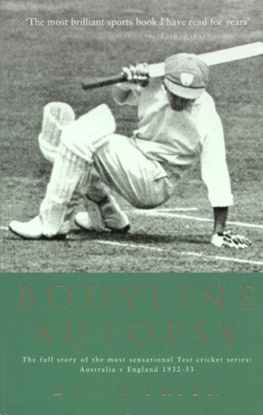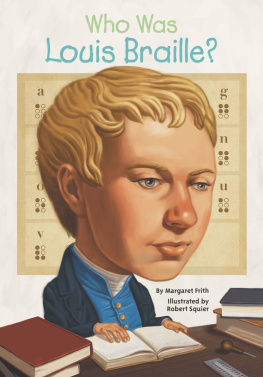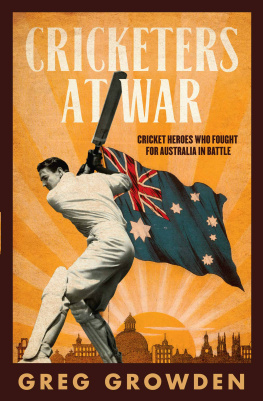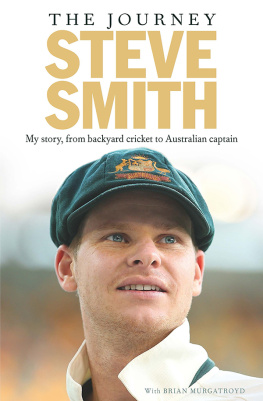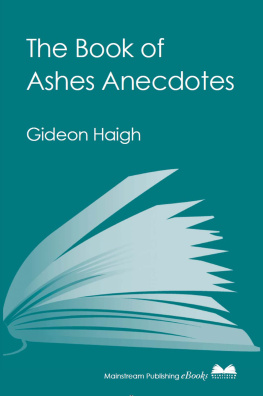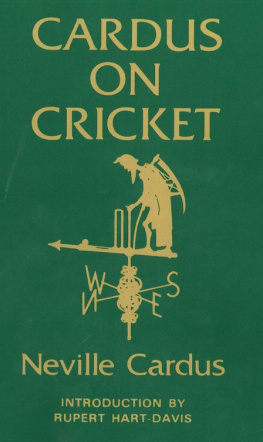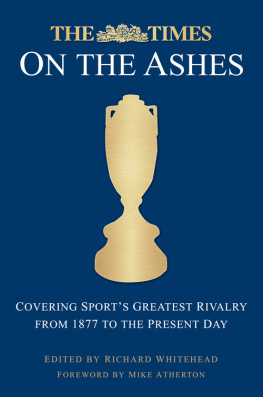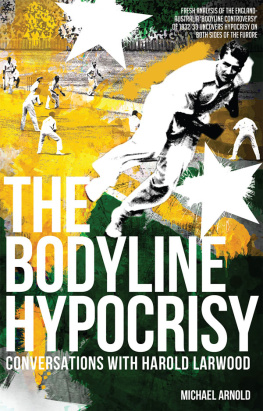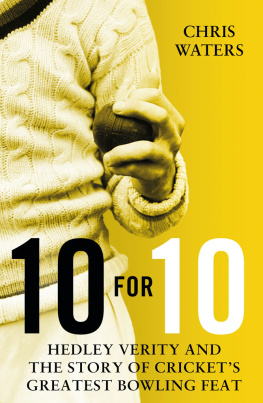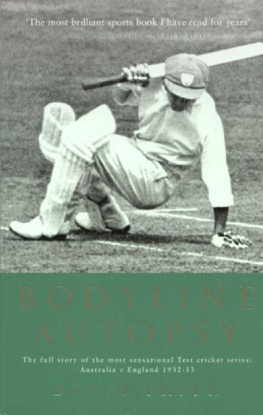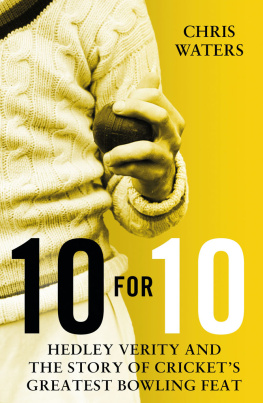BODYLINE AUTOPSY
Historian, archivist, interviewer and writer, David Frith founded Wisden Cricket Monthly in 1979 and ran it for seventeen years. He is also a former editor of The Cricketer. His many books include a bestselling pictorial history of Ashes Tests (the first 1000-picture cricket book); The Trailblazers, a reconstruction of the first English tour of Australia (1861-62) and the thrilling 1894-95 series; Silence of the Heart, his acclaimed study of cricket suicides; The Fast Men, Caught England, Bowled Australia, and biographies of such disparate cricketers as John Edrich and Jeff Thomson. He lives in Guildford, Surrey.
Triumphant and masterly. As well as research the book is full of outstanding and rare pictures. No-one could possibly have done either job better. Down the years Frith has interviewed just about everybody alive who played their part on that fevered stage, or around it. To be sure, no historian, ever, need bother again with Bodyline striking testament to Friths exhilarating scholarship. Relishable, climactic and unputdownable, Bodyline Autopsy is Wisdens book of the year
Frank Keating, Wisden Cricketers Almanack
Friths masterly work may not be the final word but it will surely never be surpassed There is plenty of illuminating new material and a wealth of unfamiliar photographs and drawings. Frith has a rare ability to make clear sense of his vast quantity of accumulated information. He has performed a valuable service to future students and historians of the game
Christopher Douglas, Wisden Cricket Monthly
OTHER BOOKS BY DAVID FRITH
RUNS IN THE FAMILY [WITH JOHN EDRICH]
MY DEAR VICTORIOUS STOD: A BIOGRAPHY OF A.E.STODDART
THE ARCHIE JACKSON STORY
THE FAST MEN: A 200-YEAR CAVALCADE OF SPEED BOWLERS
CRICKET GALLERY: 50 PROFILES OF FAMOUS PLAYERS FROM THE CRICKETER [ED.]
GREAT MOMENTS IN CRICKET [AS ANDREW THOMAS, WITH NORMAN HARRIS]
AUSTRALIA VERSUS ENGLAND: A PICTORIAL HISTORY OF THE TEST MATCHES SINCE 1877
THE ASHES 77 [WITH GREG CHAPPELL]
THE GOLDEN AGE OF CRICKET 18901914
THE ILLUSTRATED HISTORY OF TEST CRICKET [ED. WITH MARTIN TYLER]
THE ASHES 79
THOMMO [WITH JEFF THOMSON]
ROTHMANS PRESENTS 100 YEARS ENGLAND V AUSTRALIA [ED. WITH DOUG IBBOTSON & RALPH DELLOR]
THE SLOW MEN
CRICKETS GOLDEN SUMMER: PAINTINGS IN A GARDEN [WITH GERRY WRIGHT]
ENGLAND v AUSTRALIA TEST MATCH RECORDS 18771985 [ED.]
PAGEANT OF CRICKET
GUILDFORD JUBILEE 19381988
BY HIS OWN HAND
STODDYS MISSION: THE FIRST GREAT TEST SERIES 189495
TEST MATCH YEAR 199697 [ED.]
CAUGHT ENGLAND, BOWLED AUSTRALIA [AUTOBIOGRAPHY]
THE TRAILBLAZERS: THE FIRST ENGLISH CRICKET TOUR OF AUSTRALIA 186162
SILENCE OF THE HEART: CRICKET SUICIDES

T he day has come. With the death of Sir Donald Bradman on February 25, 2001 all the 193233 Test cricketers and umpires and newspaper-men, and almost all of the spectators too, have now departed this life. No more argument. No more first-person recollections. The chronicle is complete.
Or is it? Indeed, will it ever be?
Even though there have been over 1300 Test matches in the 70 years since Bodyline, it remains the most dramatic Test series of them all. It incorporated the Wild West shoot-out between the smart young sheriff (Don Bradman from Bowral, New South Wales) and the narrow-eyed gunslinger (Harold Larwood from Nuncargate, Nottinghamshire). In London and in the cash-strapped dominion of Australia it sparked cloak-and-dagger activity in the cloisters of powergovernmental as well as cricketing. With the unrepentant and emotionally repressed Douglas Jardine bestriding the tumult, tempers rocketed. Cricket enthusiasts were shaken by what was going on out on the field of play and off it. Relations between England and Australia were severely damaged.
Although repair work was urgently undertaken in the wake of the Bodyline tour, there have been sinister echoes whenever England and Australia have fought over the hallowed little Ashes urn ever since. By its divisive nature, and because of the vast mass of conflicting views and claims springing from it, no other Test series even remotely compares with it. Each of the major players was distinctly either hero or villain. Bodyline polarised two nations, though not quite in total terms, since there are and were Australians who accepted it and Englishmen who deplored it.
By 1982 Bodyline seemed to be receding slowly into history. Then all kinds of 50th anniversary celebrations and commemoratives materialised. Passions were rekindled. Australian republicans pointed afresh at Albions cricketing perfidy and asked what further proof could possibly be needed that the constitutional break was both desirable and necessary. English cricket-lovers, currently bowing before fast bowling, sought comfort in the long-ago triumph wrought by Harold Larwood and his team-mates under their extraordinary captain. As for Larwood, now 78 years old and happily settled in the land of his old adversaries, a new intake of hate mail came his way.
The 1982 revival of interest has been strongly sustained. To the original batch of contemporary books on Bodyline came important additional volumes, together with a definitive television documentary by the BBC and an entertaining Australian drama-documentary which added to the excitement while being seriously flawed. Since then, the images and texts from the stormy days of 193233 have continued to hang over cricket and wider society, sometimes being utilised to further an argument, or to justify strategy, to condemn, to gloat, to berate.
My personal stance is as an Anglo-Australian who cares deeply about these two nations and the bonds between them, and about the cricket relationship in particular. One of the benefits this hybrid condition affords is that one can stand back and consider the foibles of both countries with even-handed amusement.
It is, I plead, both understandable and excusable that my feelings about Bodyline have vacillated over the years. As a London-born boy growing up in Sydney in the 1950s, I was moved to write a fan letter to Harold Larwood. It remained unacknowledged, but years later I was extremely happy to get to know him. Later, the more I read about Bodyline and the harm it did to Anglo-Australian relations the more reservation I felt about the English campaign. Caught up in the Bradman legend, like most people, and later in a personal friendship with him, I saw the broader implications of the desperate attempt to cut him down to size after 1930. Nothe subject wont ever die, he wrote in a 1983 letter to me, the reason being that publishers and editors (like you) appreciate the news value of the subject. It creates interesting reading matter and the only people who suffer (or should I say the main person who suffers) is me, because I am the focal point. Larwood doesnt suffer because he adopts a pious, innocent stance.
Bodyline bowling was worrying on two levels. Physically, it was aimed at Australian throats. Figuratively, the mother country seemed to be hitting below the belt. Two estimable umpires were distressed at some of the things they witnessed from close quarters, but they did not intervene, for the brutal English bowling was not against the Laws of Cricket as they then stood. But it was thought by the majority to be against the spirit of the game. Ethics had been firetorched. (As recently as January 2002, Dave Richardson, the International Cricket Councils newly appointed cricket guardian, reaffirmed that its a mans game and Im all for that, but the players also need to decide for themselves if they want to play it as a gentlemans game, a tenet that stretches back to Regency days.)
Next page
